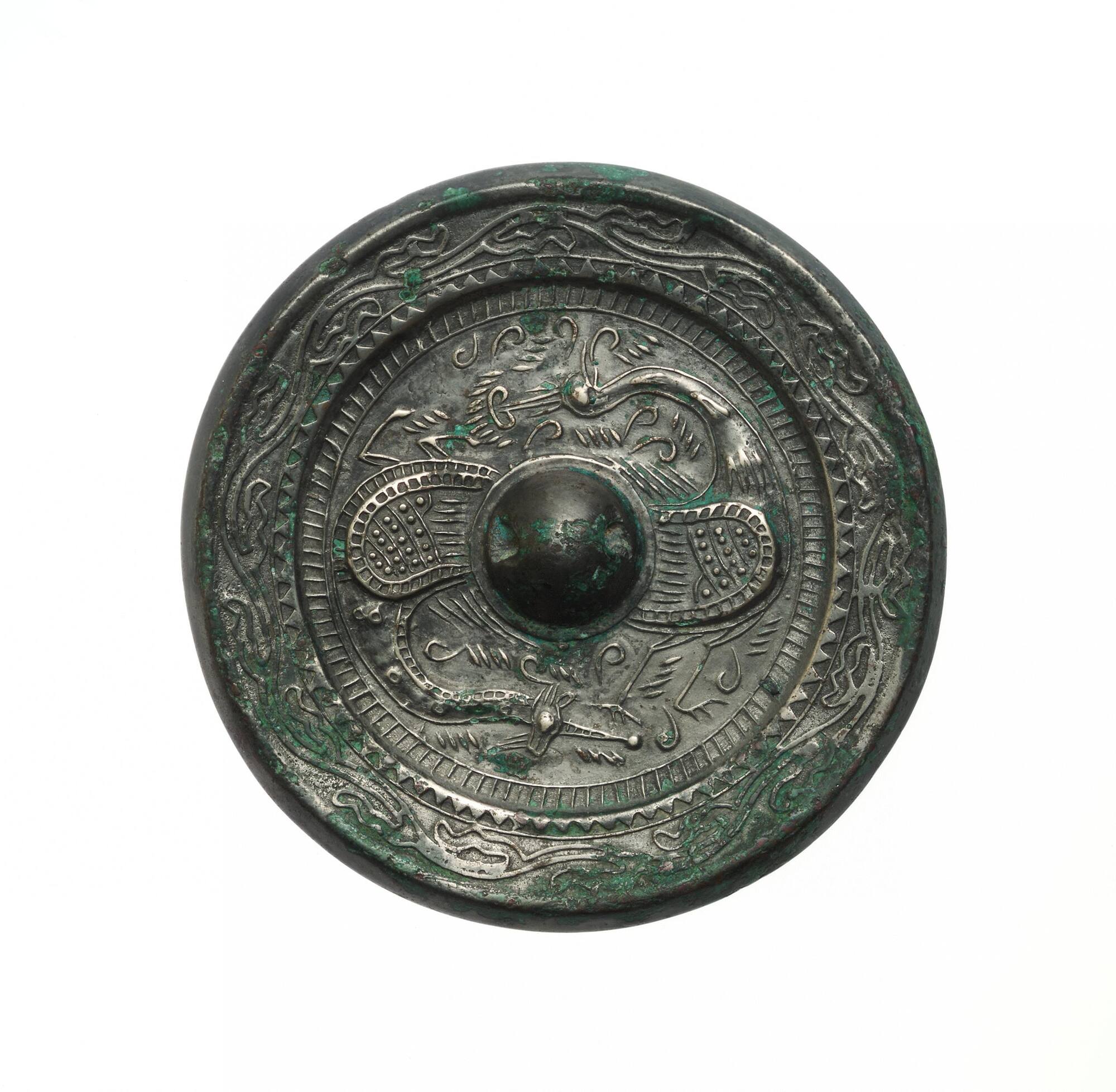
Object Details
Culture
China
Eastern Han dynasty (25 BCE–220 CE)
Medium
Bronze
Dimensions
Diameter: 4 3/8 inches (11.1 cm)
Credit Line
Gift of Mrs. Richard Salisbury
Object
Number
2003.011.002
BRIEF DESCRIPTIONThis is a Chinese bronze mirror decorated with a dragon and a phoenix.HOW WAS IT MA(…)
BRIEF DESCRIPTIONThis is a Chinese bronze mirror decorated with a dragon and a phoenix.HOW WAS IT MADE?This bronze mirror was made using a casting method. A two-part mold was made of clay, one side of which featured the design in its negative form (carved and/or stamped into the clay), while the other side remained blank. The two parts were joined, and molten bronze poured into the narrow gap between them. A single mold could only be used to make one mirror, as it would have to be broken to free the mirror.HOW WAS IT USED?Bronze mirrors in the Han dynasty served multiple functions, one of which was to reflect the owner’s visage. The undecorated side of the mirror is the reflecting side, and is flat, shiny and smooth. The knob on the decorative side had a ribbon or cord threaded through it. Mirrors may have been passed from one generation to the next.This mirror was placed in a tomb because it was believed that mirrors had the ability to ward off evil spirits by making them visible in the reflection. It also served to radiate light and illuminate the tomb for eternity. Some mirrors were placed reflective side up on the chest of the dead.WHY DOES IT LOOK LIKE THIS?As one of China’s most complex and ubiquitous symbols, the dragon (“long”) combines mythological and cosmological ideas. The fifth animal in the Chinese zodiac, it is associated with luck, fertility, the direction East, sunrise, and spring rains. Beginning in the Han dynasty (206 BCE-CE 220), the dragon was the symbol of the Emperor, the Son of Heaven, while the phoenix symbolized the Empress, and by extension, both animals together came to symbolize marriage. Marriage mirrors were carried by the bride during the wedding procession, and then suspended over the bed in order to ensure good fortune for the couple and ward off evil spirits.To see two other Chinese bronze mirrors in the Johnson Museum’s collection, search for object numbers 98.067.008 and 2000.166.003 in the keyword search box.












